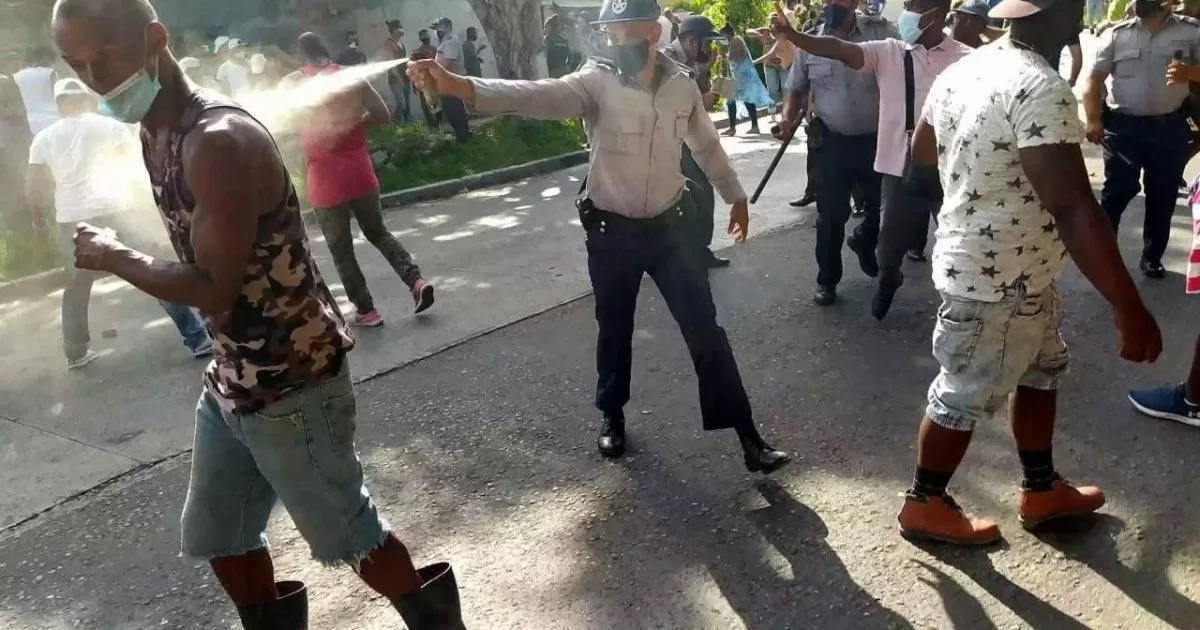Last Friday, federal and local cultural authorities, led by the secretary Alejandra Frausto Guerrero and the general director of the National Institute of Anthropology and History (INAH), Diego Prieto Hernández, as well as the general director of the National Fund for the Promotion of Tourism (phonatur), Javier May Rodríguez, inaugurated the exhibition “Get on the train” at the Los Pinos Cultural Complex, which exhibits a selection of 11 archaeological pieces recovered during the archaeological salvage work in the priority project of the Mayan Train, in the Yucatan peninsula.
Said pieces, all rescued by the Archaeological Salvage Department in the first four sections of the project, are exhibited in the nucleus “Original Heritage. Archaeological findings in the Mayan Train”, in the “Miguel Alemán” House. Among them is a pot with a spout and a bowl, both dated between AD 50 and 250, which were part of the elements of a burial.
At the center of this nucleus, Stela 18 stands out, a rectangular limestone slab 132 centimeters high and 56 centimeters wide, with both faces worked in bas-relief, discovered in Uxmal, Yucatán, and whose discovery was announced last October. The north face of this dual piece shows a female deity holding a quetzal in her left hand, while the south face shows a male numen with a mask associated with Tlaloc.
“There is no antagonism”
During the opening ceremony of the exhibition, the director of the INAH pointed out: “there is no antagonism or incompatibility between the progress of the work and the care of our archaeological heritage. What’s more, it gives me the impression that the Ministry of Culture and the INAH have managed to charm the construction companies, the National Defense Secretariat itself and the phonatur of the importance and scope of archaeological work”.
The general director of Fonatur added: “of course, the work of the Mayan Train is responsible with the environment. With the Mayan Train, protected natural areas are increasing in the southeast and will be the largest reserves in Mexico and the second after the Amazon. In addition, a historic reforestation is being carried out with 500 million trees from the Sembrando Vida program,” he said, adding that this reforestation is equivalent to more than three times the size of Mexico City. “The Mayan Train does not affect the environment, on the contrary, it will stop and begin to reverse the environmental damage that was occurring in the Mexican southeast,” he reiterated.
Impact on the Jaguar Paw system
At the same time, this weekend the “Sélvame del tren” collective, which has opposed the priority work, especially in Section 5, shared a series of videos recorded by the hydrologist and speleologist Guillermo D’Christy, says , recorded inside the Jaguar Claw cave system, located in the Paamul jungle, between Playa del Carmen and Tulum, in Section 5 of the Mayan Train, where the work of excavating machines on this natural heritage is heard.
“We are at one of many entrances to the Jaguar Paw ecosystem. Directly above, a few meters over there is the drilling machine. We have already seen multiple places where the rocks have been falling due to the movement of the drills (…) By the way, there are many fallen trees, and that obviously happened very recently. Let’s take into account that since January 17 there is a suspension against deforestation”, declares the speleologist while being observed inside a cave.
Another video presented on February 18 shows what D’Christy assures are some of the 2,800 piles that will be installed inside the mano aquifer in the region and questions whether there are guarantees that the aquifer will not be contaminated by the corrosion of thousands tons of steel rods and tubes.
“All that steel that is going to remain inside the aquifer mantle, all that concrete, who tells us that it will not affect the chemistry of the water? No one has had the responsibility of informing the population. The only thing that interests them is to sell the wonderful thing about the train, to make it folklore, to mention all the wonders that they will be able to visit, but nobody is telling us about the realities of the environmental impact. There is no environmental impact manifesto that talks about the piles”.
To contrast, during the morning conference at the National Palace on February 13, Javier May Rodríguez explained that more than 60% of Section 5 South of the Mayan Train, which runs from Playa del Carmen to Tulum, will be an elevated viaduct “to protect the karstic soil, cenotes, caverns and underground rivers in the area” and explained that there will be a cable-stayed bridge about 290 meters long that “will allow the safeguarding of the Jaguar Claw cave.”
Archaeological prospecting so far:
- 7,188 registered and recovered real estate structures.
- 132 rescued movable objects.
- 8,878 ceramic fragments or sherds.
For Section 5 South A, the following are allocated:
- 200,000 tons of cement.
- 112,000 tons of steel.
- 6,667 rail tons.
- 3,147 pieces of foundation piles.
Previous information related to the topic:
The Mayan Train will be the final thrust for the jungle in Quintana Roo

